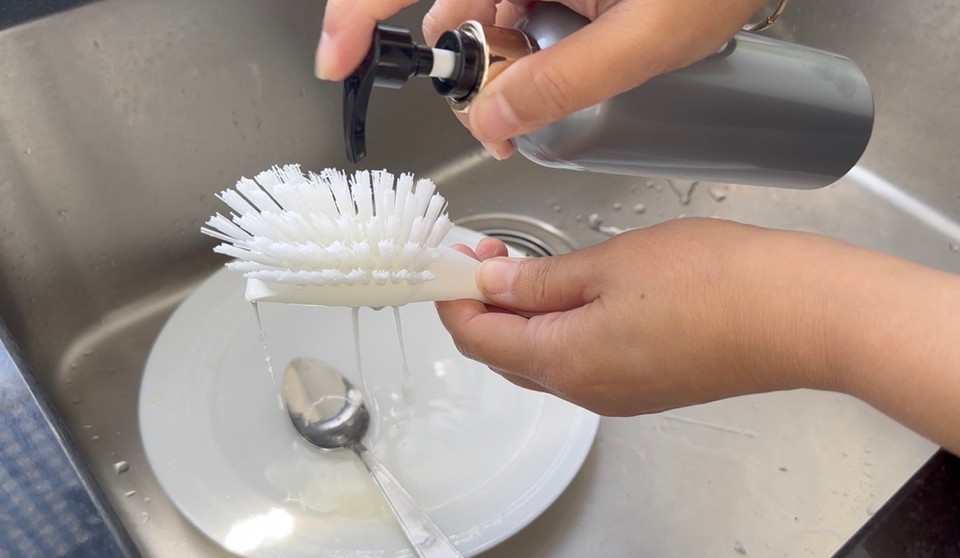Easy Liquid Dish Soap
| Phase | Ingredient | Percent (%) | Weight (g) |
|---|---|---|---|
| Phase A | Distilled water | 73 | 73 |
| SCS | 20 | 20 | |
| Phase B | Glycerin | 4 | 4 |
| Xanthan gum | 1.4 | 1.4 | |
| Essential oil (optional) | 0.8 | 0.8 | |
| Phase C | Preservative Cosgard (INCI - Benzyl Alcohol, Dehydroacetic Acid, Aqua) | 0.8 | 0.8 |
This recipe is for liquid dish soap.
I usually use solid dish soap to wash dishes and as a kitchen cleanser. However, sometimes I need a liquid cleaner to make the cleaning easier. If you have a Vitamix or a similar blender, you know how easy it is to splash some liquid soap into it and blend it with water for a quick, easy clean between uses. So sometimes solid dish soap is not enough, and I use a liquid cleanser.
I wanted to make an easy yet effective cleanser that I could quickly make with a minimum ingredient list.
I checked some store-bought dish soaps and found that most have PH levels around 9-11.
This formula will give you around 10 PH level, which is more alkaline than solid dish soap. You can lower the PH to 9 if you want; I left my dish cleanser at a PH of 10. Check this post about PH adjustments in cosmetics.
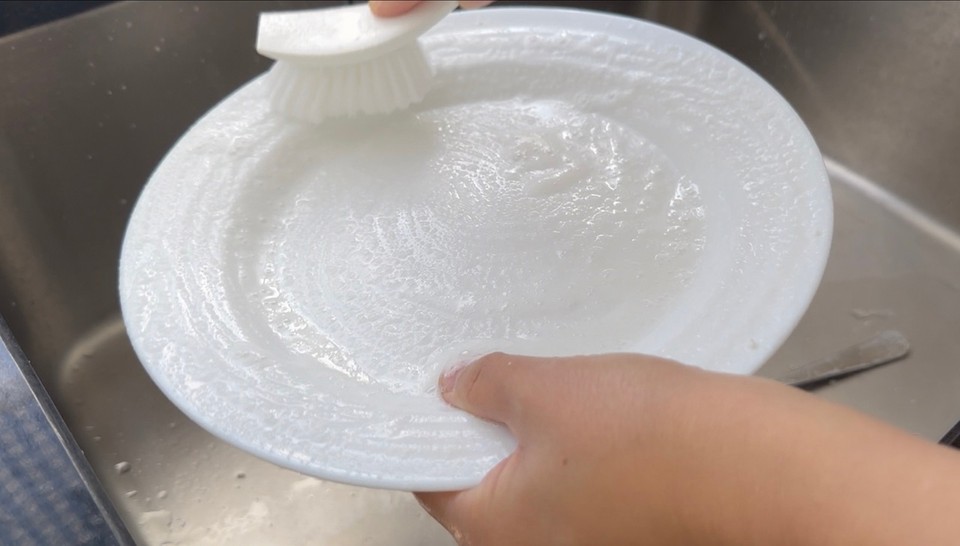
I was trying to make this liquid soap with only one surfactant, and after trying several surfactants, I decided SCS (Sodium Coco Sulfate) would be the best fit for this formula.
SCS (Sodium Coco Sulfate) is a non-ionic surfactant certified by ECOCERT and BDIH. SCS is derived from coconut oil, making it gentler compared to some other sulfate-based surfactants like Sodium Lauryl Sulfate (SLS) and Sodium Laureth Sulfate (SLES).
SCS effectively cleanses by dissolving oils and dirt, producing a rich and stable lather.
SCS is considered to be environmentally friendly and biodegradable.
If you are looking for alternatives to SCS, Sodium Lauryl Sulfoacetate (SLSA) is a good alternative. SLSA is a mild, plant-derived surfactant that also produces a rich and stable lather. SLSA is an anionic surfactant (negatively charged hydrophilic (water-attracting) head). SCS is soluble in water and has a PH of 10-11. Sodium Lauryl Sulfoacetate (SLSA) usually has a PH of 6-7, so you'll need to test the final product and adjust the PH if necessary. You might need to increase the PH level with sodium hydroxide solution. Read this post about how to adjust the PH level in cosmetics.
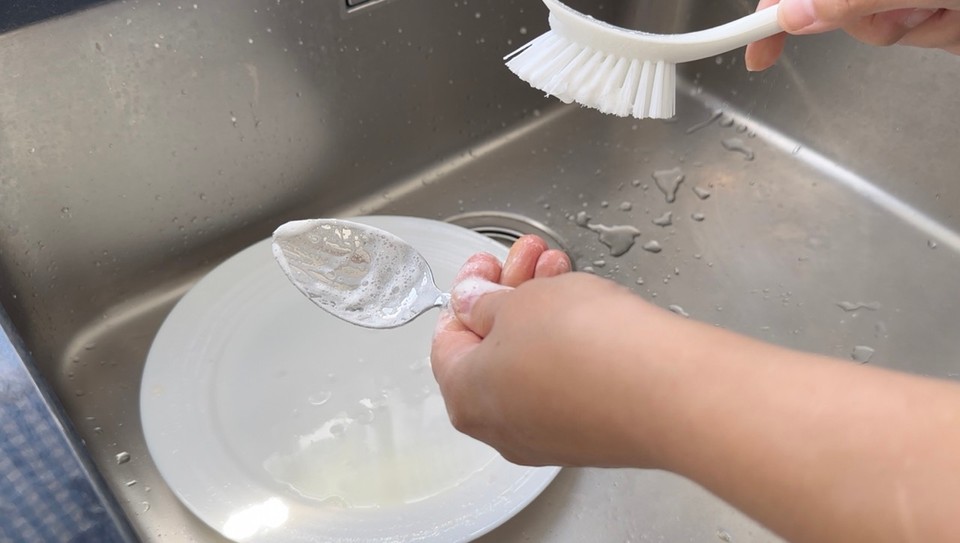
This formula contains one surfactant combined with distilled water and a slurry (xanthan gum and glycerin). You can make this liquid cleanser unscented or add essential oil. I did add essential oil, but this is optional.
I used clear xanthan gum, which gives a transparent appearance. If you use regular xanthan gum, your final product will appear opaque. I used gum in this formula to thicken the product and make it more gel-like. I mixed the gum with the glycerin to avoid lumps. Glycerin has a neutral pH of 7, similar to water. I aim to achieve a PH of 9-10 in this formula. Since SCS has a PH of 10, my final product will be around this PH level.

Xanthan gum is not a solubilizer but can hold a small amount of oil. Since I only use a small amount of essential oil, I don't need to use a solubilizer and mixing the oil with the slurry is enough for this formula. Also, SCS can aid in solubilizing certain ingredients.
If you prefer an unscented product, skip the essential oil and add the amount to the distilled water instead.
Some essential oils for dish soap are lemon, orange, lime, grapefruit, peppermint or lavender.
Lemon essential oil is known for its powerful degreasing properties. It can help to cut through tough grease. Orange essential oil is also effective in cutting grease, similar to lemon.
I used grapefruit, one of my favorite scents for cleaning soaps and also has degreasing properties.
SCS is water-soluble, but I find that it dissolves easier when I mix it with hot water. You can use pre-heated distilled water or combine the SCS with room-temperature water and place them into a double boiler until the SCS completely dissolves.
If you use a different kind of preservative, make sure to follow the supplier's instructions and adjust if necessary. If you need to use a higher percentage of the preservative, reduce the added amount from the distilled water.
This formula results in a very efficient dish cleanser. The best container for this formula is a pump bottle you can reuse many times.
In the video, I made 380g of the product; use the calculator to adjust the amount you want to make.
Method:
- In a heat-resistance beaker, add heated distilled water.
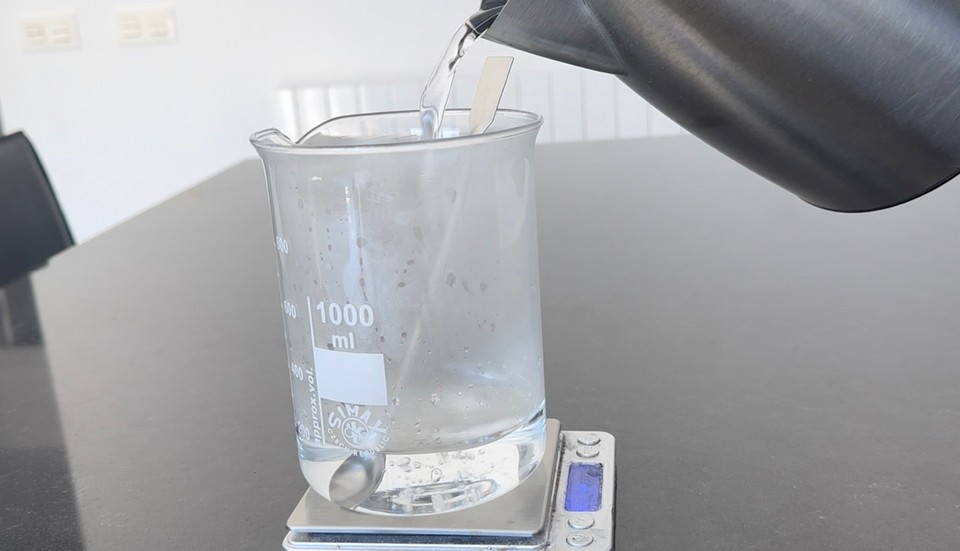
- Add the SCS to the water and mix until the SCS dissolves completely. This can take time; keep stirring until all the surfactant is dissolved.

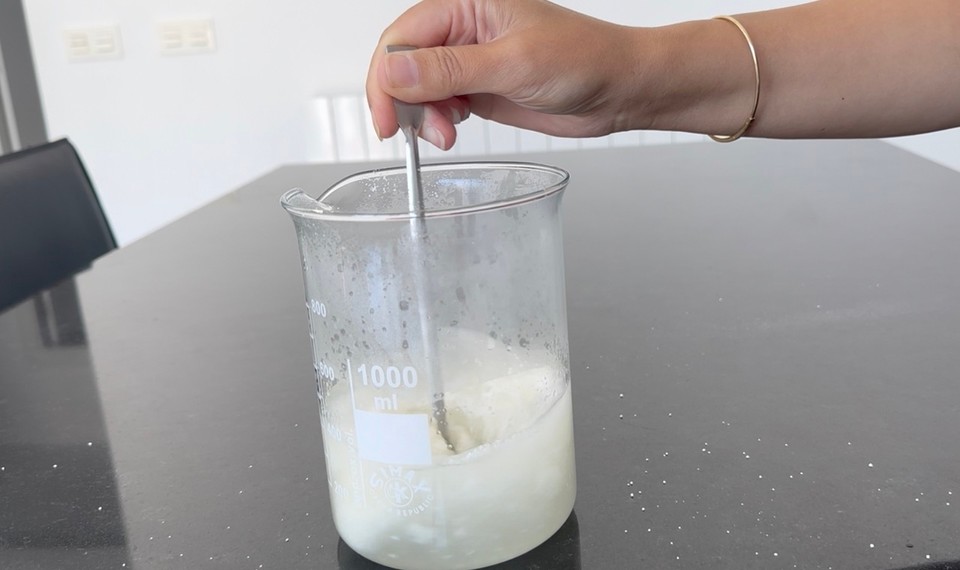
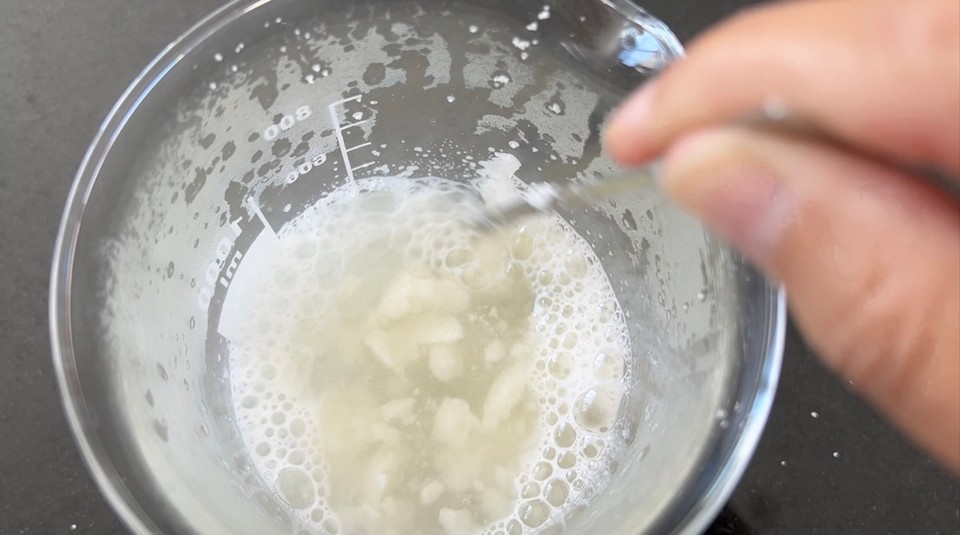

- Add the gum and glycerin to another beaker. Mix the gum and glycerin to create a slurry.
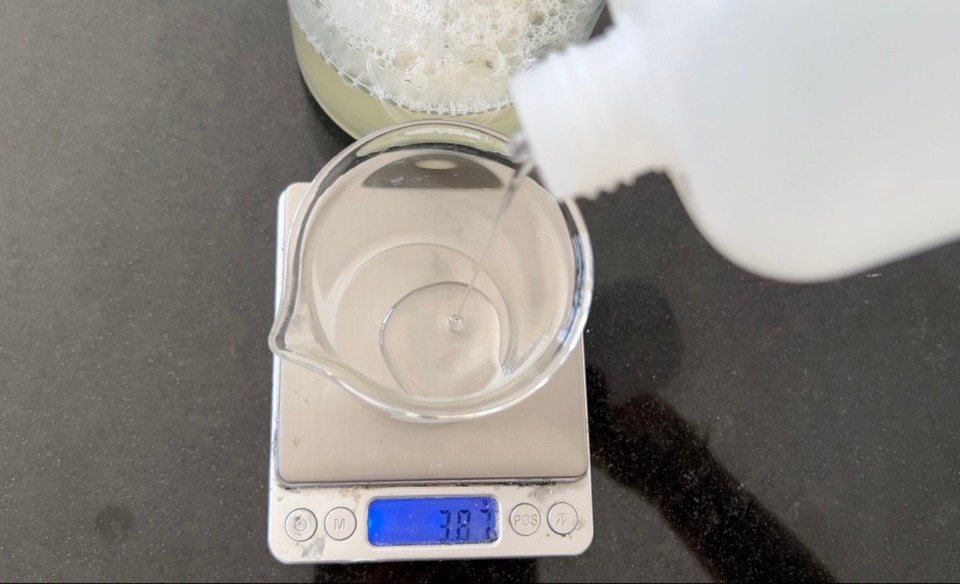
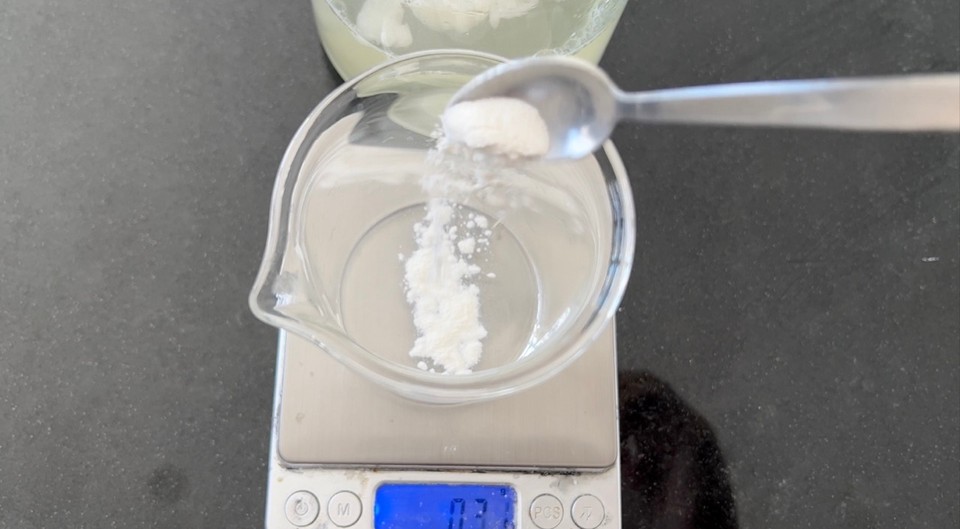

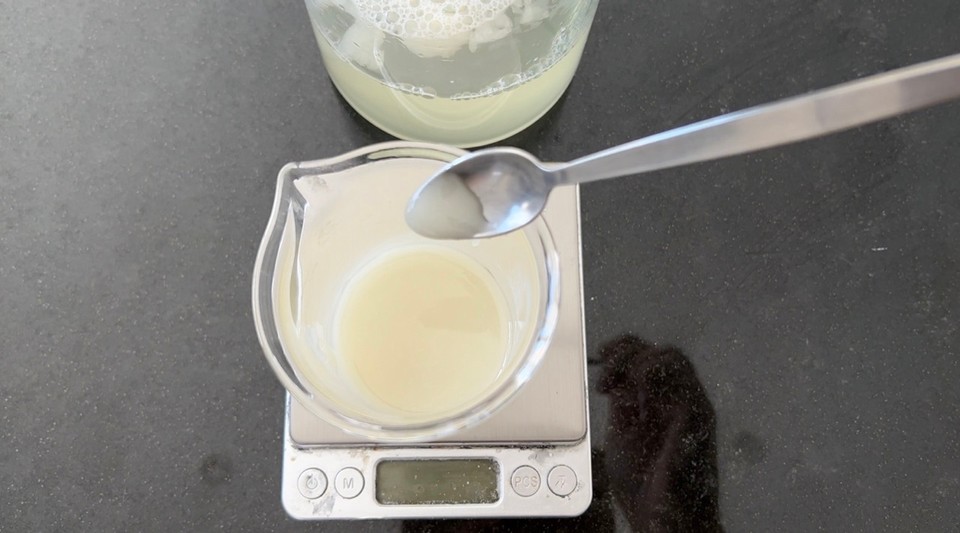
- Add the essential oil to the slurry and mix to combine.
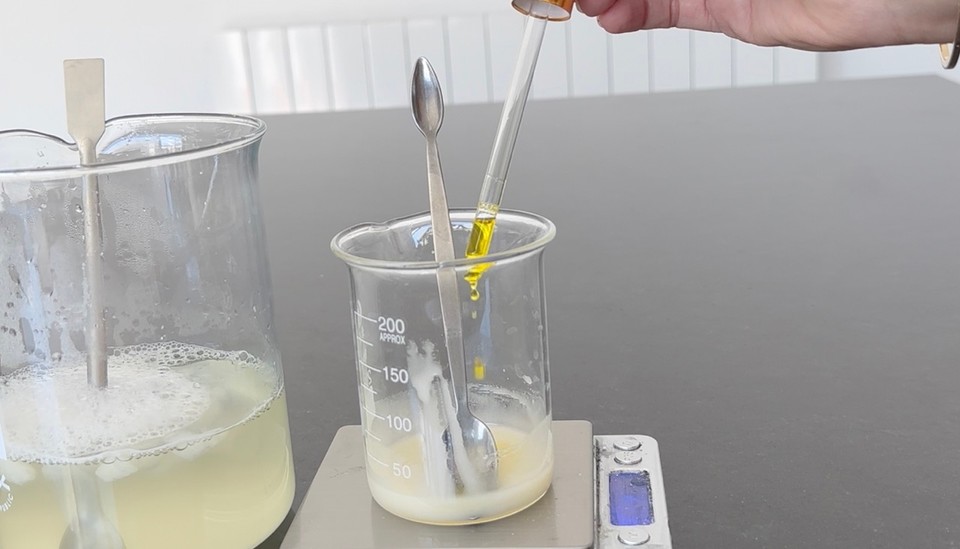
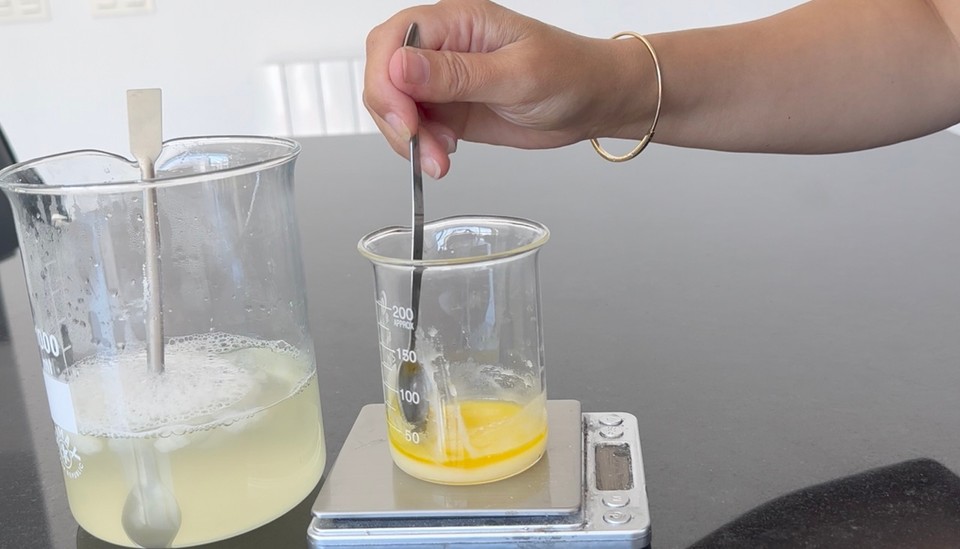


- Combine the slurry with the SCS solution and mix well.
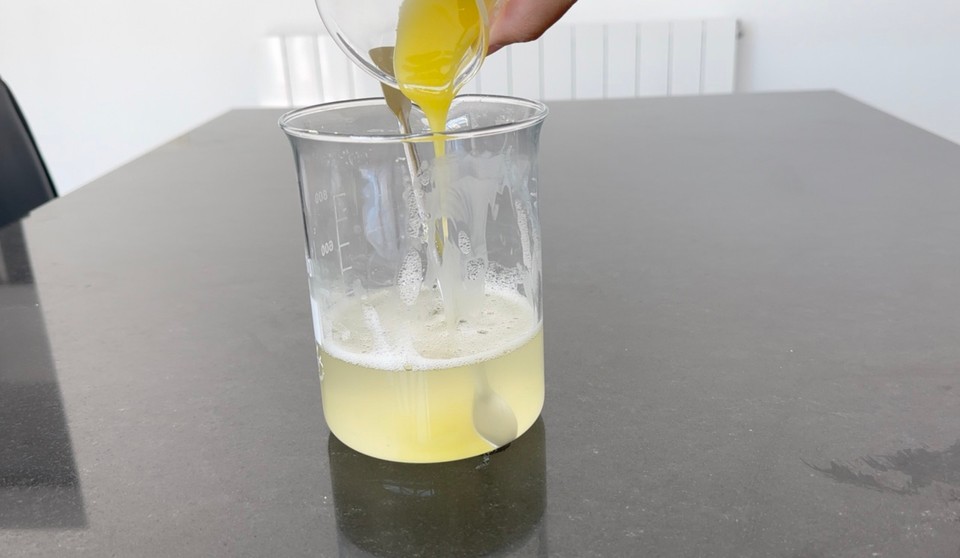
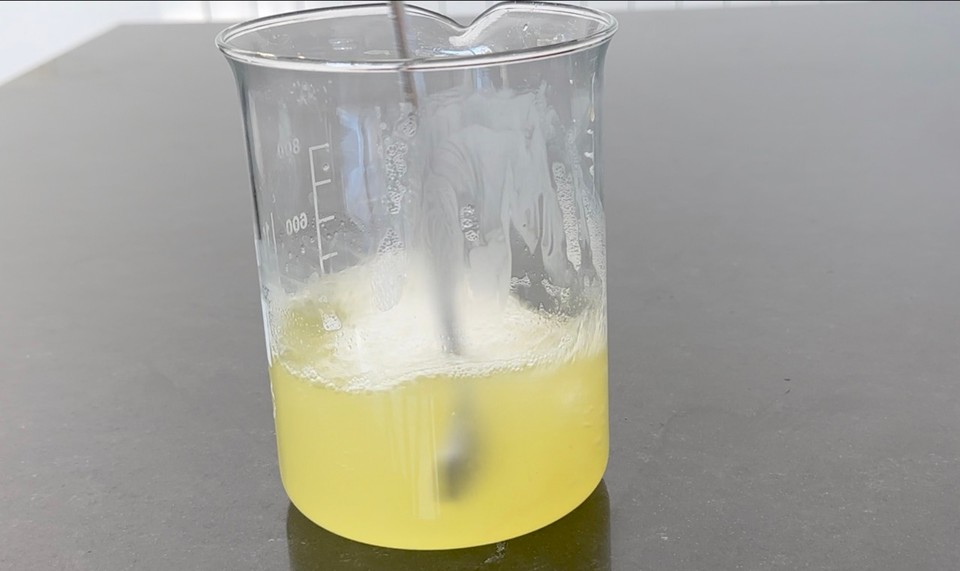
- Add the preservative and stir to combine.
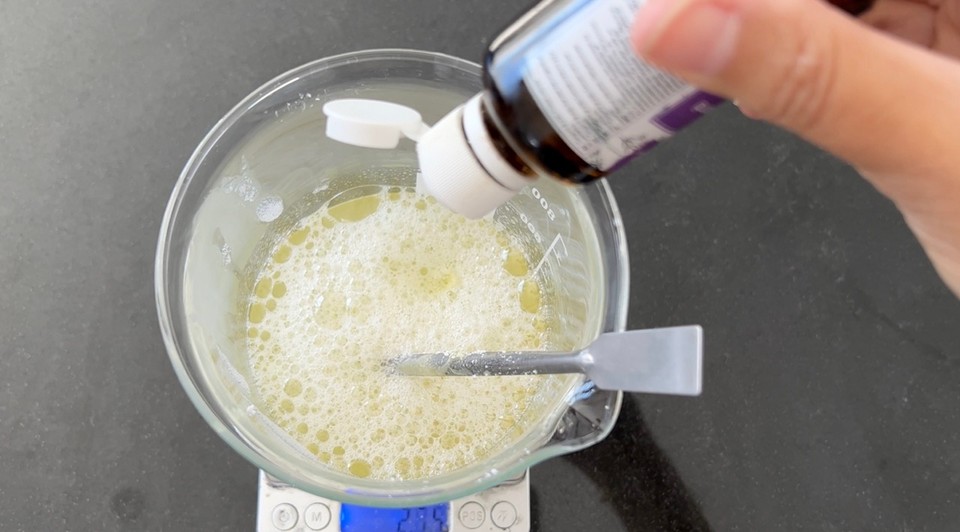
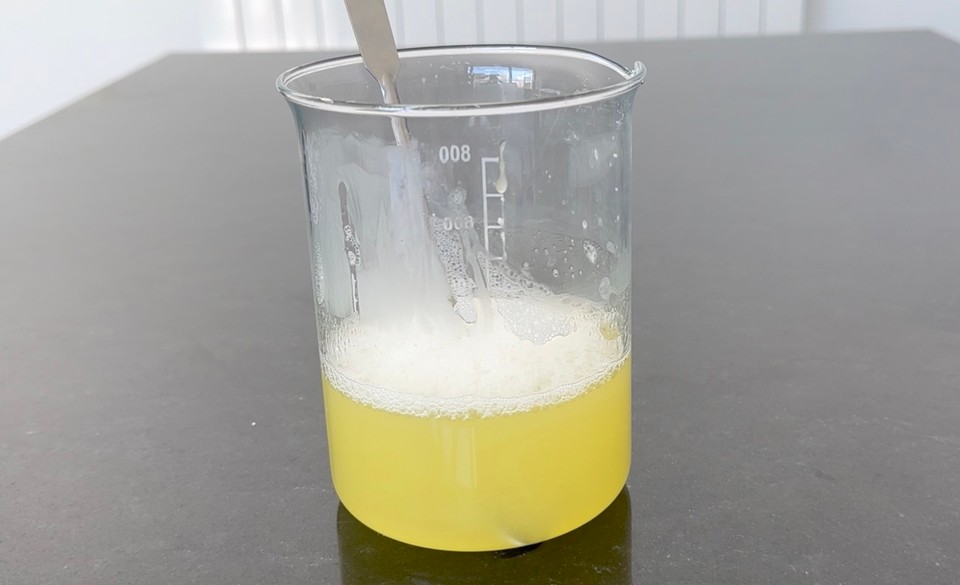
Check the PH level and adjust if necessary.
Pour into a pump bottle. The dish cleanser is ready to be used.

